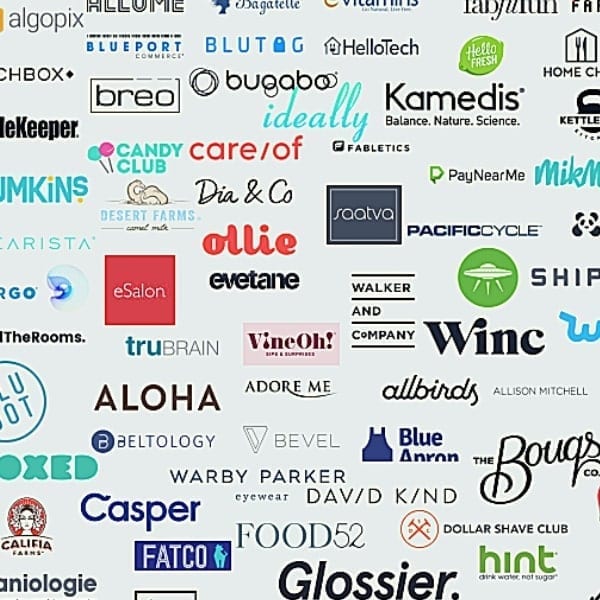In its list of 250 direct-to-consumer brands to watch last year, IAB highlighted the critical components that set these brands apart from their retail competitors.
‘Digital native’ brands, as they are sometimes called, are known by their “reliance on digital storefronts that sell only their own branded goods, product development cycles continuously enriched by first-party data from their consumers, expertise in social media communications, and a marketing mix that blends highly scaled and targeted programmatic advertising with lifestyle-focused content marketing.”
A major theme running through these distinguishing factors is the way DTC brands connect with their customers.
Digital native brands like Warby Parker, Casper, Dollar Shave Club, Bonobos and Glossier cut their teeth on programmatic, personalized advertising efforts. Search ads and social promotions, complete with behavioral retargeting, held more sway than the offerings of more traditional media sellers.
But does that still remain true?
An Expanded Marketing Mix for DTC Brands
While DTC brands are best known for their digital advertising, the big brands have been experimenting with TV ads and billboards for several years. Smaller, more recent entrants like ScentBird and Brooklinen are including subway ads and 30-second TV ads in their marketing mix right away.
The move toward more traditional advertising reflects how many of the biggest DTC brands, principally Internet-based sellers, have slowly but surely moved into physical retail spaces.
While most of the DTC business model is aimed at customer retention, both the move toward traditional advertising and physical retail speak to the co-equal importance of customer acquisition. It’s for this reason Terence Kawaja, LUMA Partners CEO, writes that TV represents the biggest opportunity for DTC brands’ continued growth.
The medium “offers a great opportunity to connect with existing customers over a new channel while also reaching a new audience to continue to expand its customer base,” writes Kawaja. This is particularly true when DTC brands leverage over-the-top television, such as existing streaming services and soon-to-come integrated advertising offerings from giants like NBCUniversal.
The shift toward traditional marketing is also due, at least in part, toward the rising cost of digital ads and the difficulty in effectively scaling highly targeted marketing campaigns. In a marketing field determined by metrics and conversion, using television to reach a new audience is associated with its own set of challenges. Legacy limitations on spend, difficulty in gathering metrics and the lack of first-party data are all potential pitfalls for DTC media buyers that ad sales teams should know how to address.
But the benefit of reaching an entirely new market seems to pay off for many DTC brands. “DTC brands are using TV to broaden their reach to go head-to-head with the incumbent brands that have always been there,” writes Ashish Chordia at The Drum.
In short, the idea that DTC brand focus solely on digital advertising is a myth – at least nowadays. So what is that distinguishes DTC brands in terms of advertising?
What Sets DTC Brands Apart – and How Ad Sales Speaks To Them
The features that set DTC brands apart from their larger (and largely retail-oriented) competitors has less to do with the medium they advertise with and more to do with the way they brand themselves.
Partners & Spade co-founder Anthony Sperduti told Curbed that DTC success is found in minimalist design and simple, direct branding. “The first wave of direct-to-consumer brands born on online—like Warby Parker and Harry’s nine years ago—were really able to take some of those great lessons,” Sperduti said. “Combined with good economics, you have fresh minds offering value and better design than more mature companies that have dated views of design and marketing. You have enough of those, then you have social media, and it starts to become almost a movement.”
All of this reveals that successful DTC brands are not defined by their marketing mix, but by the way they interact with consumers.
“The most successful D2C companies out there win through the kind of brand experience they offer to their consumers, from the reliable deliveries of Dollar Shave Club to the unique marketing of Glossier,” writes Katherine Duh at the Airtable blog. Katherine also put together a knowledge base of the top 25 DTC brands to know that is definitely worth checking out as you dig deeper into the segment.
Ad sales teams can use this knowledge to tweak the way they speak to media buyers, regardless of the medium. Knowing that the priority is on a relationship with the customer, publishers across all mediums can speak to how DTC ad dollars can further that goal. It’s a good starting point for any pitch.




